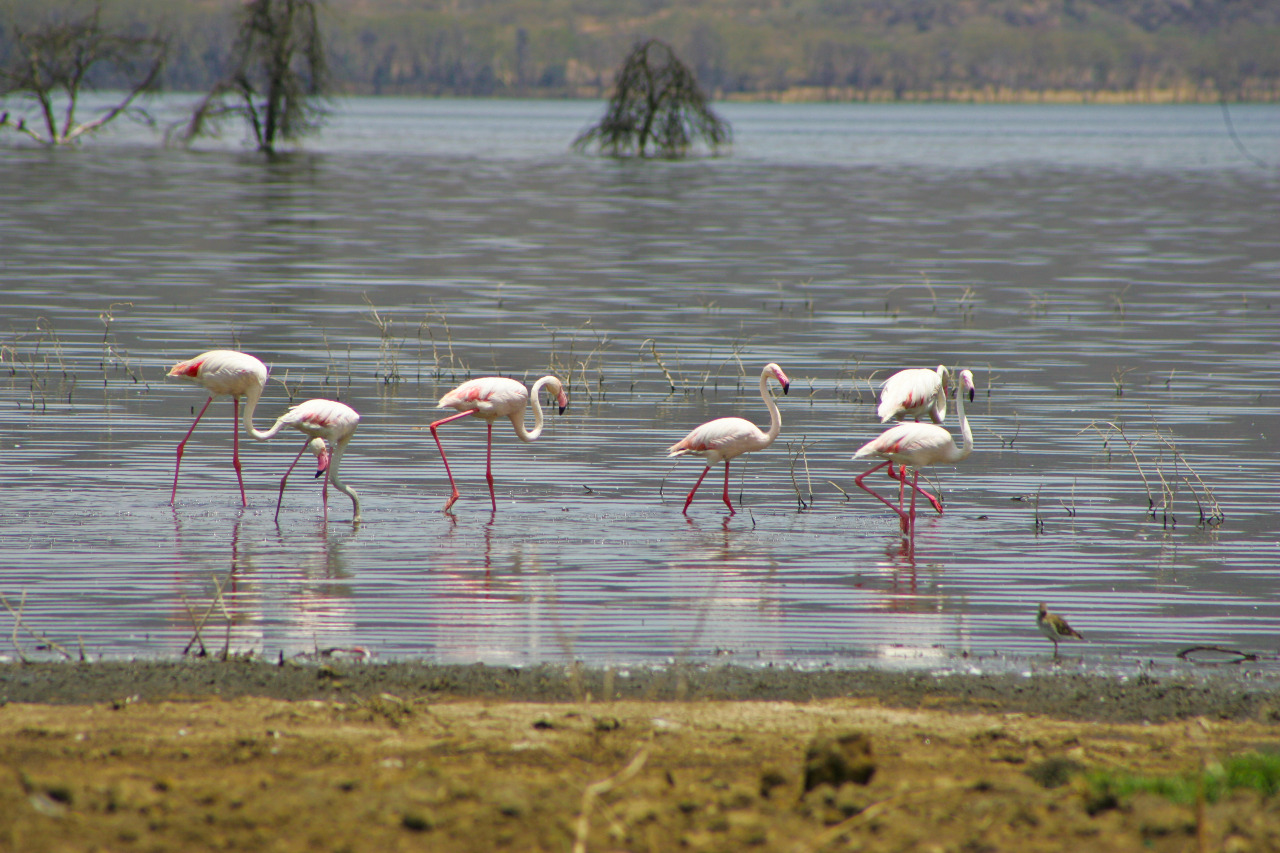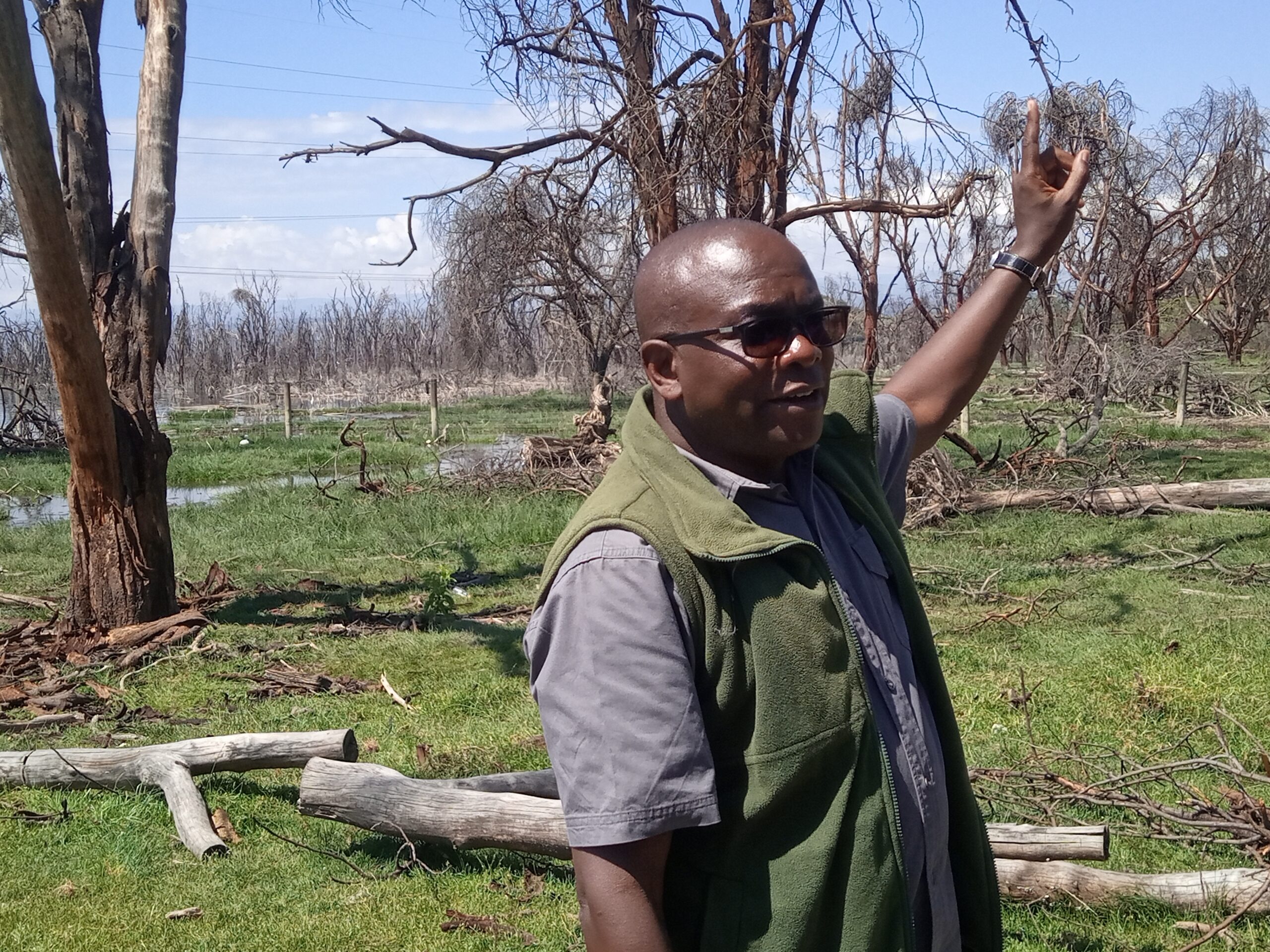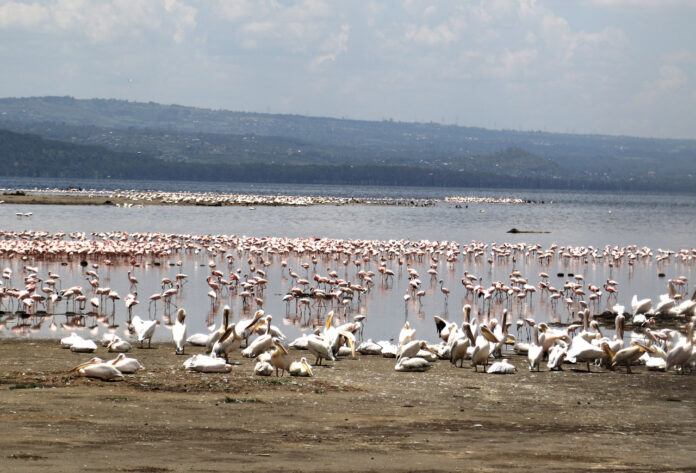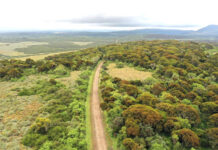By David Omurunga
Nakuru County, Kenya: Jackline Muhonja a mother of 3 and a resident of Nakuru City, has never understood why lesser flamingos in Lake Nakuru, are diminishing in numbers.
She vividly recalls how flamingoes were in plenty when she was young.
“As a young girl, we used to go around the lake, especially over the weekend, to see flamingos, my friends and I were amazed by the pink color of flamingos. It painted the lake pink, I really miss the experience”, said Muhonja.
“Were the flamingos poisoned, or what went wrong”, she asks. “Nowadays, it’s rare to see the pink color lased lake. The lake is gloomy”, added Muhonja.

Muhonja now opts to spend her time in the city’s public park and is optimistic that Kenya Wildlife Service (KWS)will soon get solutions to the ailing lake, in order to bring back the fame it had, locally, nationally, and internationally.
During a tour of the Lake Nakuru National Park for a fact-finding mission organized by the Media for Environment, Science, Health and Agriculture (MESHA), the saline water of Lake Nakuru, was neutralized by increasing amount of rainwater from the five rivers (Makalia, Nderit, Njoro, Naishi, Larmudiac and Ngosur).
This is a result of climate change that has overturned the 188 square kilometers of lake Nakuru National Parks together with its catchment area of 1800 square kilometers of biodiversity.
The Wildlife Research Training Institute (WRTI), based in Naivasha released a report in 2018 showing that the lake had over 300,000 flamingos.
In 2021, the institute conducted a similar count and recorded a dwindling number of 6,000 flamingos.
Joseph Edebe, a senior researcher at the institute said that the quality of water at the lake has changed, affecting the food for lesser flamingos. “The blue-green algae, which is food for the flamingos thrives well in alkaline conditions with a PH of 10.5”.

“Currently, the lakes PH dropped to 9, hence migration of the flamingos, to other places like Lake Natron in Tanzania ”, Adebe told Talk Africa.
“The lake which is 44 square kilometers has increased in its size to 80 square kilometers, hence the increase in the lake’s depth, from 4.5 meters to 9 meters”, Edward Karanja, a senior park warden, associated the challenges of the park with climate change.
The ecosystem in the Lake Nakuru National Park (LNNP) has for the past decade experienced a drastic change from the phenomenon.
“The change has not only affected the flamingos, but also the carnivorous and the herbivorous”. “The increase in water levels of the lake has also displaced people from their homes and farmlands”, added Karanja.
The lake which is internationally recognized as a wetland of importance in the Ramsar convention on wetlands or Ramsar site is also an Important Bird Area, IBA.
With a myriad of challenges facing flamingos, the Institute is racing with time to address the food shortage.
“We are in the process of doing more research on how to scientifically come up with green algae, as a possible alternative, since the natural algae is no longer available”, said the Principal scientist Dr. Judith Nyunja , WRTI.
Lesser flamingo (Phoeniconaias minor) has the biggest population among other bird species found at Lake Nakuru National Park, Kenya.
As Muhonja, waits for a complete return of the warm pink color of Lake Nakuru, different environmentalists advocating for the restoration of the lake, are also eager to hear about the outcome and the mitigation measures engaged during the upcoming COP 27 conference in Egypt, scheduled on 6th all the way to 18th November 2022.














